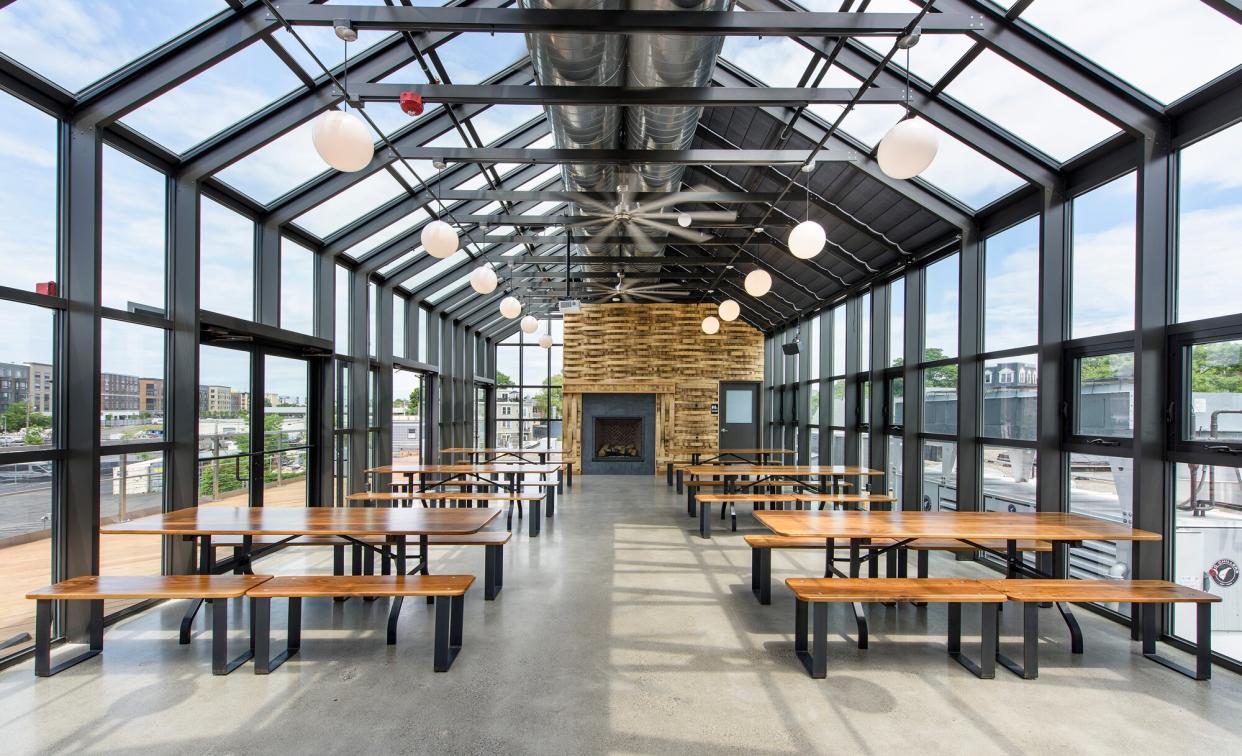How COVID Changed Restaurant Design Forever

RODE / Nat Rea Photography Boston’s Dorchester Brewing Company, designed by RODE Architects.
When restaurants first welcomed diners back during the pandemic, aesthetics took a back seat to survival; makeshift tarps provided separation between tables, and bike lanes became dining rooms. But as the new normal has become a reality for operators, COVID-19's influence is already noticeable in design choices for both outdoor and indoor dining—and it likely will be for years to come. We asked hospitality and design professionals for their tips and predictions for what's next in pandemic-responsive restaurant design.
3 Design Tips from RODE Architects Principal Eric Robinson
Prioritize Room to Move
Eric Robinson, whose firm designed popular Boston spots such as Coppersmith and Dorchester Brewing Company, acknowledges that while six feet apart is the rule of thumb for social distancing, operators should take into account that guests will push back chairs and servers need to walk between tables. Dining rooms are not the same as waiting in a line outdoors—they're dynamic, constantly moving spaces. When redesigning your floor plan, take that flow into account, even if it means losing room for another table or two.
Bring Your Restaurant's "Before Times" Vibe Outdoors
Plexiglass will certainly do the trick for social distancing, but unless it's meticulously and constantly cleaned, it risks looking greasy. Robinson encourages operators to create "an outdoor space that's a little bit more special" and embodies the style of decor indoors, be it rustic or modern, by repurposing elements like drapery, bookshelves, and planters as separators, depending on what feels on-brand for your business.
Build Proactively
No one wants another pandemic, but Robinson wants adaptable, proactive designs to become the new normal. For example, pre-COVID, RODE outfitted South End bacaro SRV with flexible front walls that open up for free airflow, a measure that has been critical for safer indoor and outdoor dining.
3 Predictions from Hospitality Professor Dr. Stephani K. Robson
Booths Will Make a Comeback
"In major markets across the last few years, we've seen a move toward a lot of comfort-based restaurant design, like cushy seating and wraparound banquettes," says Dr. Stephani K. Robson, who teaches hospitality design at the Cornell School of Hotel Administration. "I think guests are going to be a little leery of absorbent materials, so we're going to see design become more sanitizable." Robson doesn't envision a bleak, Formica-only world but instead predicts the return of sleek, high- backed booths, which easily meet safety guidelines when five feet tall.
Sectioned-Off Will Be the New Norm
"Designers are used to separating spaces with lighting and finish changes, but now we've got to think about making [those separations] more physical," Robson says. "Breaking the dining space up into smaller sections—similar to what we saw in the '70s [à la nonsmoking and smoking sections]—so there is more containment and fewer people will help. Plus it's a bit cozier."
Designers Will Learn to Say It in Style
"There's a temptation to just download the CDC poster [about safety guidelines] and tack it up in the restaurant," Robson says, but savvy operators seize the opportunity to show care for guests by creating custom messaging and signage in their own voice that jibes with the concept of the restaurant.

